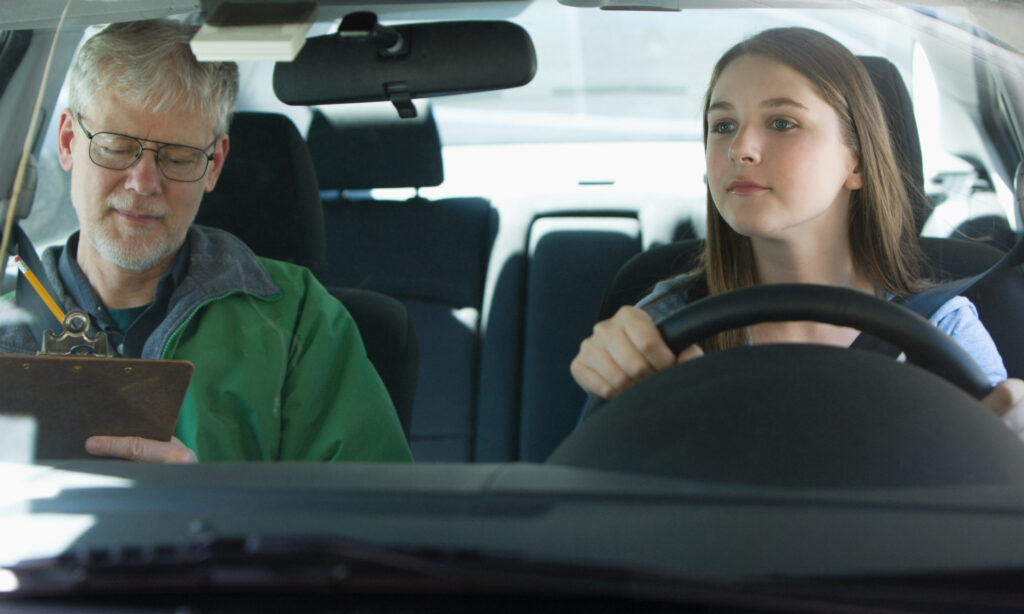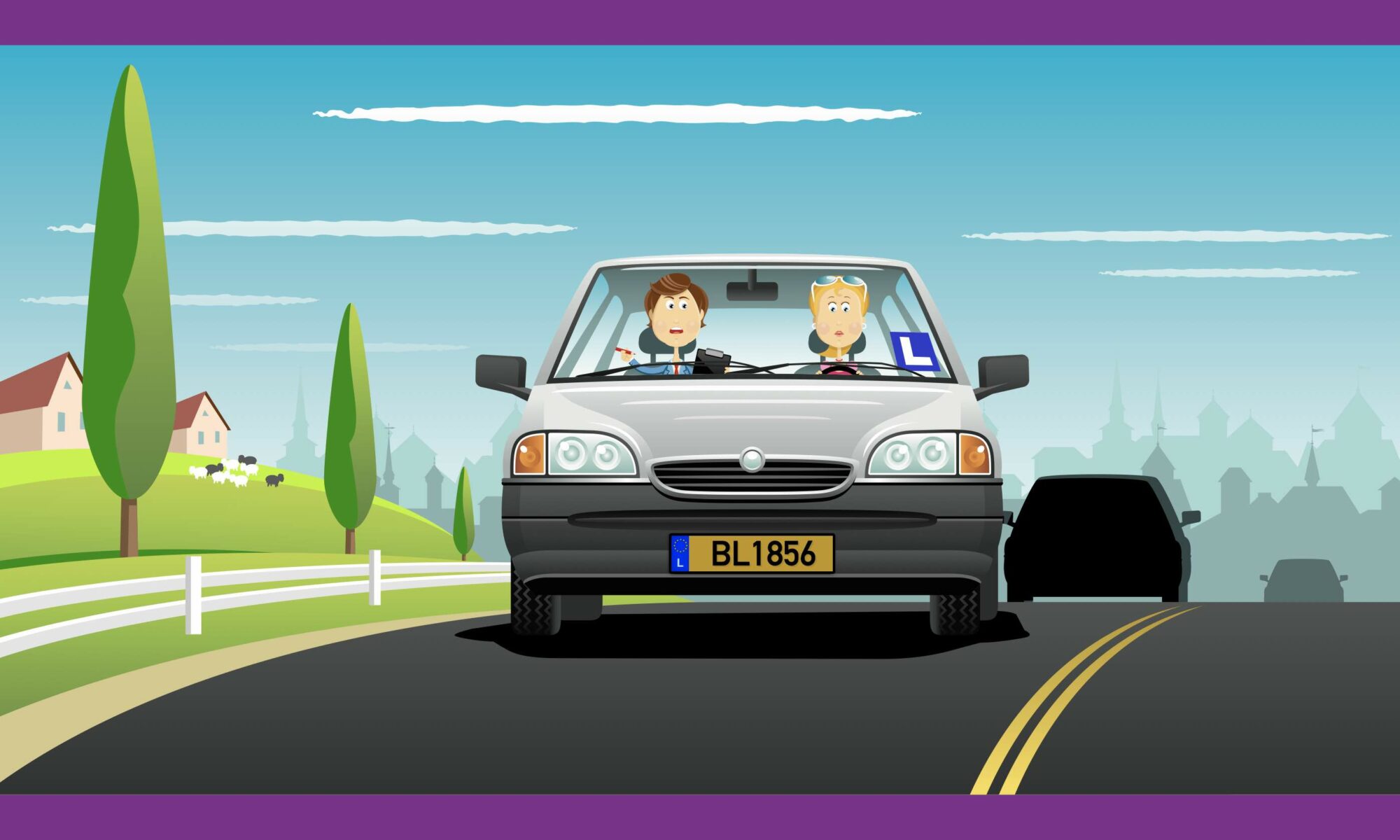Getting your driving licence in Luxembourg
Most teens see getting a driving licence as an important step towards independence, a rite of passage that leads to new opportunities in life. You need a licence to drive a car and use all types of motor vehicles. myLIFE explains how to get one of these coveted holy grails.
Are you a scooter, motorcycle or car person? Whichever mode of transportation you choose, you will need to get your driving licence before you hit the road. This is an important milestone that includes several steps. It’s not necessarily easy, but it’s well worth the effort!
The driving licence: yet another step towards independence
There are many reasons people choose to get their driving licence, whether it’s for more flexibility, getting a job, or taking a trip whenever you like.
But be warned, not just anyone can get their licence! Before you get started, there are some conditions that you must meet, such as the age minimum. For a category B licence (car), you must:
- be 18 years of age
- live in Luxembourg
- agree to a medical examination to be declared fit to drive.
If you have certain disorders (arrhythmia, angina, alcohol or drug addiction), it’s best to let it go and look elsewhere.
What about other vehicles?
Don’t like cars? There are other options! Each category of vehicle has its own age minimum:
- 16 years of age for AM (mopeds and light quadricycles), A1 (light motorcycles and tricycles with a power output under 15 kW) and F (tractors) licences,
- 18 years of age for A2 (motorcycles with a power output at or above 35 kW), C1 (motor vehicles weighing between 3.5 and 7.5 tonnes that can transport a maximum of 9 people), C1E (C1 or B category motor vehicle with trailer or semi-trailer) licences,
- 20 years of age for category A motorcycles,
- 21 years of age for A (tricycles), C (motor vehicles weighing more than 3.5 tonnes that can transport a maximum of 9 people), CE (category C motor vehicle with a trailer / semi-trailer), D1 (vehicles up to 8 metres in length that can transport a maximum of 17 people), D1E (D1 tractor vehicle with trailer) licences,
- 24 years of age for category D and DE motor vehicles that can transport more than 9 people (buses and coaches).

To get your licence, regardless of the vehicle category, you need to go through an accredited driving school.
Practice makes perfect
To get your licence, regardless of the vehicle category, you need to go through an accredited driving school that will send your licence application to the Société nationale de circulation automobile (SNCA) for the current fee of EUR 30. You can choose any driving school you wish and change at any time. Registration fees vary widely depending on the school, generally between EUR 40 and EUR 100.
In addition to studying with the driving school, if you are at least 17 years of age, you can also choose accompanied driving to prepare for your category B licence, i.e. your car driving licence. After you’ve passed the theory exam and completed the practical instruction, you can drive accompanied by a parent or experienced friend or family member who has had their licence for at least six years. The driving school will include your chosen accompanying driver in your application.
First step: the theory test
The first step to getting your driving licence is studying for and passing the theory test. Here you’ll learn the rules of the road. Once you pass the exam, you will receive a certificate, valid for three years, where you can record your lessons. The number of lessons required depends on the category of vehicle. You must have at least:
- 12 one-hour lessons for categories A, A1, A2, AM, B and F
- 6 hours for categories A, A2 and B, if you already have a licence in another category.
The cost depends on how many hours of instruction there are for the theory test. Plan for EUR 120–180 in total.
To finish this first part, you must pass the multiple-choice test on a computer in Luxembourgish, French, German, Portuguese or English. The tests are conducted at one of the SNCA testing centres, in Sandweiler, Esch-sur-Alzette or Diekirch. To make sure you’re prepared, test your knowledge with sample questions on the SNCA website. If you fail, you will have to retake half of the required instruction hours and submit an application for readmission.
If it takes you some time to get your licence, it will also cost more money. If you have to submit a readmission application, you need to purchase a EUR 30 tax stamp from the driving school.
One hour of practical instruction costs about EUR 65.
Second step: the practical test
Did you pass your theory test? Let’s get down to business. It’s time to practice! Before you can take the practical exam and finally get your licence, you need to take another series of lessons:
- 16 one-hour lessons for categories A, A1 and B
- 10 one-hour lessons for category A2 if you already have an A1 licence.
Once again, the total cost depends on how many hours of instruction you take with the driving school. One hour of practical instruction costs about EUR 65.
With your certificate and that familiar white “L” on a red background, you can now drive in Luxembourg with your chosen accompanying driver. Once you’re ready, head to your practical test, which you can take as many times as you need to (it’ll cost you EUR 100 per test). Each time you fail, however, you need to add 8 more hours of practical instruction to your file.
If you pass the first time, you will need a total budget of EUR 1300–1400 for a category B licence.
If you pass the first time, you will need a total budget of EUR 1300–1400 for a category B licence (registration fees, tax stamp and lessons).
Learning to drive in all conditions
Congratulations! You now have your long-awaited driving licence, valid for 24 months. During this “new driver period”, you are required to take a day-long class at the Training Centre in Colmar-Berg after you have had your licence for at least three months.
Finally, you can expect to spend EUR 200 during the week or EUR 225 over the weekend for your required automobile or motorcycle driver class, including insurance and meals.
After this class, you will finally get your official licence, valid for 10 years and issued one month before your temporary licence expires at the earliest.
Driving safely
Now that you have your licence, you are ready to safely hit the road. But don’t forget that Luxembourg licences start with 12 points. Drive carefully in all situations to ensure your safety and that of others, and to avoid tickets that will ruin all the effort you’ve already put in.
Getting your driving licence in Luxembourg takes time and money. If you choose the right driving school and accompanying driver, you will set yourself up to pass the theory and practical exams, and at the end of the road, gain independence and freedom.


 Mortgage
Mortgage Personal loan
Personal loan Savings
Savings